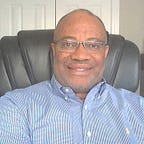Retired and Loving It
In a recent Medium piece, I shared surveys showing that over 75 percent of retired people are happy in retirement. While not explicitly addressed in the surveys, financial experts tell us that financial security underlies happiness.
Develop a financial plan, execute the plan, amass a million dollars or two, and your retirement will be blissful, goes the storyline.
I followed the traditional retirement path. I studied hard, graduated college, worked for forty-two years and then retired.
Retirement was one of my life’s milestones, freeing me from the shackles of a nine-to-five job.
Once I retired, that station in my life was closed, with no looking back and no regrets.
Planning, sacrifice, good fortune, and quality-of-life habits started in my forties all contributed to my retirement delight.
Early in my career, I started planning for retirement with financial independence and a pre-retirement standard of living as the goals. Financial strategies included:
- Investing the maximum amounts in available deferred compensation plans,
- Taking a pre-retirement sabbatical, then returning to full-time employment, and
- Retiring at the full legal retirement age to maximize social security and Medicare benefits and grow other nest eggs.
The above strategies provide several income streams, eliminating the need to work for money after retirement. However, early on, I realized that financial independence alone would not yield a fulfilling retirement.
Several books reinforced this notion.
Steve Covey’s, The Seven Habits of Highly Effective People, mainly Chapter 7, “Sharpening the Saw,” was transformative.
My takeaway from Chapter 7 was the importance of an active lifestyle, balance, and ongoing reinvention to a fulfilling life and retirement, specifically in the following dimensions of life:
Mental Health — This dimension includes being a lifelong learner, reading the wisdom writers, and keeping one’s mind sharp and stimulated.
In my pre-retirement days, my readings consisted mainly of books, articles, and magazines on achieving financial success, happiness and personal improvement, and management styles and techniques. These days, I am a burgeoning writer and storyteller. I follow many Medium writers who provide an array of writing styles, interests and perspectives.
Physical Fitness — The link between physical activity and high quality of life is well documented.
I have always enjoyed sports. Tennis was my sport of choice when I was in my forties. Aching knees forced me to bicycle, which I continue today.
Spiritual Fulfillment — This dimension refers to the need for a greater sense of purpose and meaning.
I was raised in an old-fashioned Baptist church. However, my spirituality has wavered over the years. Being an active member in several church ministries has put me on a trajectory to greater spiritual fulfillment.
Social/Emotional Connections— This dimension is about creating and nurturing meaningful relationships.
This dimension may be the most important.
I have enjoyed a successful work-life and have ridden out my life’s storms because of meaningful relationships and a robust support system.
What good is financial freedom, good health, intelligence, and spiritual fulfillment in retirement if lonely and depressed?
Family, friends, and my church are the centerpieces of my support system.
An investment club comprised of like-minded men I helped form 23 years ago is a part of my support system. Through the club, I learned about stock market investing and formed lifetime friendships.
As I was approaching retirement, Ernie Zelinski’s book, How to Retire Happy, Wild, and Free, provided a blueprint for transitioning from a work-life to an active and fulfilling retirement.
The central themes in Zelinski’s and Covey’s books are similar, except that the former is specific to retirement and adds the importance of diverse leisure activities and artistic pursuits.
I took a couple of actions due to reading Zelinski’s book; examples include:
For most of my work-life, I had a business card. I developed and printed a retirement card that I provide when people ask what I do. The card is mostly in jest but serves its purpose.
Six months before retirement, I developed a retirement bucket list. Here goes:
- Develop a personal website — Chose to write for Medium.
- Finish writing memoirs — Mostly complete, published on Medium.
- Finish writing motorcycle diaries — Ongoing.
- Learn to fly a drone — Accomplished, interest faded.
- Buy a vehicle suitable for an old fart — Bought a new motorcycle instead.
- Join Twitter — Decided against, discontinued Linkedin, and joined Facebook.
- Provide the seed monies for a scholarship fund — Accomplished and ongoing.
- Update family history — Ongoing.
- Reconnect with old friends — Accomplished.
- Rekindle spiritual life — Accomplished.
- Restart a physical fitness program — Accomplished.
- Ride the Blue Ridge and Cherahala Parkways on a motorcycle — Accomplished.
- Ride the Natchez Trace Parkway on a motorcycle — Not accomplished.
- Attend a Gold Wing motorcycle rally- Accomplished.
- Study the evolution of the two-party political system — Ongoing.
- Study and understand the Southern Strategy — Accomplished.
- Update document, Living Large on Limited Means — Not Accomplished.
- Visit New York, California, Florida, Hawaii — Not Accomplished.
I have not broken any new ground with this piece. I have shared how I turned knowledge gained from books (you may want to take a class) into actionable items.
You can do the same, don’t procrastinate, do what you know you should do.
I appreciate you for reading the piece.
Thank You!
